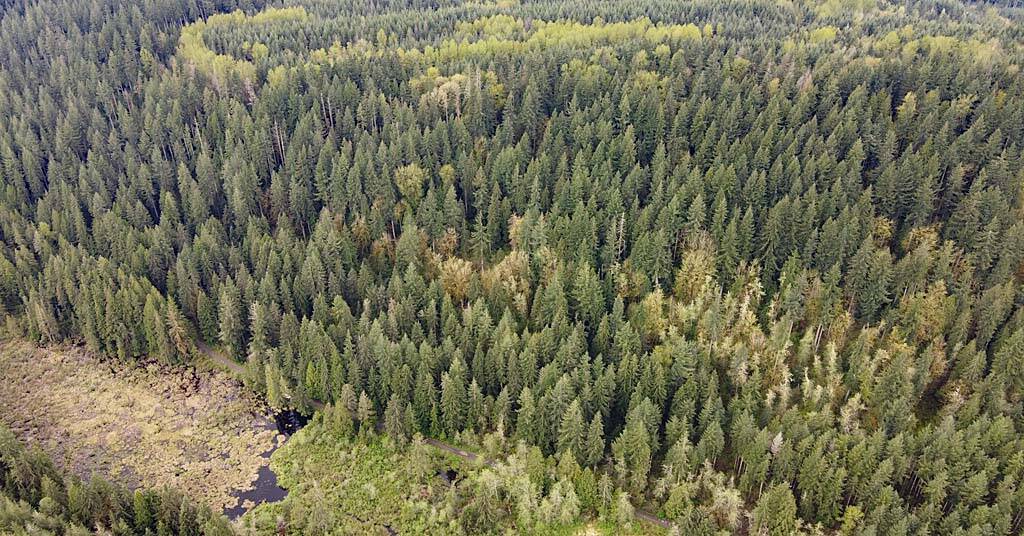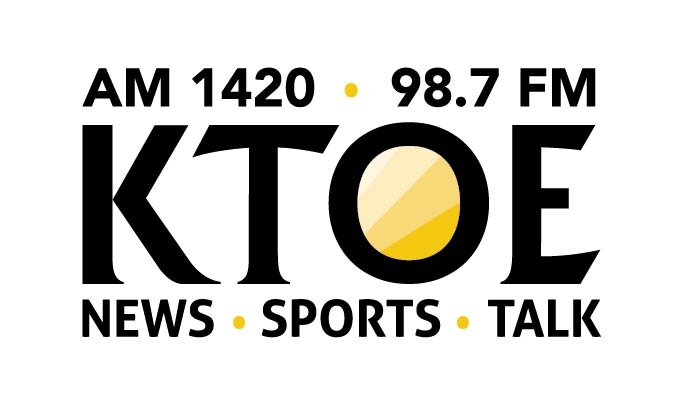DNR appeals ruling that it must account for climate change in individual timber sales – Everett Herald

Washington State DNR Legal Appeal: A Conflict Between Economic Mandates and Sustainable Development Goals
H3>Legal Framework and Institutional Accountability (SDG 16)
The Washington Department of Natural Resources (DNR) is appealing a 2024 King County Superior Court decision. This legal challenge centers on the state’s institutional responsibility to integrate climate considerations into its natural resource management, a core tenet of SDG 16 (Peace, Justice and Strong Institutions).
- Core Issue: The appeal contests a court mandate requiring the DNR to conduct climate impact evaluations for each individual timber sale under the State Environmental Policy Act (SEPA).
- Legal Precedent: The King County ruling was built upon a similar decision in Jefferson County, establishing a pattern of judicial interpretation that holds state agencies accountable for the climate effects of their actions.
- Case in Focus: The litigation originated from the proposed “Wishbone Timber Sale,” a 100-acre area of mature forest.
The outcome of the appeal will determine whether the DNR must reform its protocols to align with judicial interpretations of environmental law or if it can maintain its current operational framework. This represents a significant test of the state’s commitment to building effective, accountable, and transparent institutions at all levels.
H3>Forest Management’s Impact on Climate and Life on Land (SDG 13 & 15)
The debate over the Wishbone Timber Sale highlights the critical role of mature forests in achieving global sustainability targets, particularly SDG 13 (Climate Action) and SDG 15 (Life on Land).
- Climate Action (SDG 13): Mature temperate forests in the Pacific Northwest are recognized as exceptionally effective carbon sinks, sequestering more atmospheric carbon dioxide than any other forest ecosystem in North America. The preservation of these “legacy forests” is a direct strategy for climate change mitigation. Logging these areas would not only eliminate a vital carbon sink but also generate additional emissions from harvesting machinery.
- Life on Land (SDG 15): These 80- to 110-year-old forests provide critical habitats that support a wide range of biodiversity. They are integral to terrestrial ecosystems and are generally more resilient to climate-related hazards such as drought and wildfire, contributing to the goal of protecting and restoring life on land.
H3>Balancing Economic Development with Environmental Protection (SDG 8 & 11)
The DNR’s actions reflect a long-standing tension between its historical economic mandate and the growing imperative for environmental sustainability, touching upon SDG 8 (Decent Work and Economic Growth) and SDG 11 (Sustainable Cities and Communities).
- Historical Mandate: Established in 1957, the DNR was tasked with managing state lands to generate revenue, primarily through timber sales, to fund public beneficiaries like schools and county services. This model prioritizes resource extraction for economic and community support.
- Evolving Interpretation: A 2022 Washington Supreme Court ruling granted the DNR flexibility to preserve forested lands for purposes other than profit, including climate change mitigation. This decision enables a shift toward a more sustainable economic model that decouples growth from environmental degradation.
- The Conflict: The DNR’s argument that a 2019 regional environmental survey sufficiently covers climate impacts for individual sales is being challenged as inadequate for protecting specific, high-value ecosystems and aligning with modern sustainability principles.
H3>Policy Coherence and Partnerships for the Goals (SDG 17)
The current legal appeal raises questions about policy coherence and the state’s approach to multi-stakeholder partnerships, a key component of SDG 17 (Partnerships for the Goals).
- Apparent Policy Reversal: The appeal is being pursued under the leadership of the newly elected Commissioner of Public Lands, Dave Upthegrove, who had previously opposed the Wishbone sale and advocated for stronger climate protections. This has created uncertainty among environmental stakeholders, such as the Center for Sustainable Economy.
- Stated Commitment to Internal Reform: Commissioner Upthegrove has stated a commitment to developing a robust carbon accounting method internally, expressing a preference for “thoughtfully developed operational changes rather than court orders.”
- Future Outlook: This situation underscores the challenge of aligning institutional practices with political commitments and stakeholder expectations. The resolution of this appeal will be a defining factor in Washington’s strategy for integrating the Sustainable Development Goals into its natural resource governance, highlighting the need for effective partnerships between government agencies and civil society to achieve shared environmental and economic objectives.
Analysis of Sustainable Development Goals in the Article
1. Which SDGs are addressed or connected to the issues highlighted in the article?
- SDG 13: Climate Action – The central theme is the legal battle over accounting for the climate impacts of logging, focusing on forests’ role in carbon sequestration.
- SDG 15: Life on Land – The article discusses the management of forest ecosystems, preservation of mature forests, and their biodiversity benefits.
- SDG 16: Peace, Justice and Strong Institutions – The narrative revolves around a legal challenge to a state agency, court rulings, and the accountability of public institutions and officials regarding environmental policy.
- SDG 12: Responsible Consumption and Production – The debate over selling timber versus preserving forests touches upon the sustainable management and use of natural resources.
2. What specific targets under those SDGs can be identified based on the article’s content?
-
SDG 13: Climate Action
- Target 13.2: “Integrate climate change measures into national policies, strategies and planning.”
Explanation: The core issue is the court decision requiring the Washington Department of Natural Resources (DNR) to “evaluate climate impacts for each timber sale under the State Environmental Policy Act.” This is a direct example of integrating climate change considerations into state-level planning and policy for resource management.
- Target 13.2: “Integrate climate change measures into national policies, strategies and planning.”
-
SDG 15: Life on Land
- Target 15.2: “Promote the implementation of sustainable management of all types of forests, halt deforestation…”
Explanation: The article discusses the conflict between two approaches to forest management: selling timber for revenue versus preserving mature forests to “sequester more carbon.” The effort by environmental groups and King County council members to “preserve the trees for their climate and biodiversity benefits” is an action aimed at promoting a more sustainable management model that halts the deforestation of mature, or “legacy,” forests. - Target 15.5: “Take urgent and significant action to reduce the degradation of natural habitats, halt the loss of biodiversity…”
Explanation: The article explicitly states that King County council members opposed the timber sale to “preserve the trees for their… biodiversity benefits” and notes that “mature forests support a wide range of plants and animals.” The legal challenge is an action to prevent the degradation of this specific natural habitat. - Target 15.9: “Integrate ecosystem and biodiversity values into national and local planning…”
Explanation: The court ruling that forces the DNR to consider climate impacts on a “sale-by-sale basis” is a mechanism for integrating ecosystem values (like carbon sequestration) into local planning and decision-making processes for individual timber sales.
- Target 15.2: “Promote the implementation of sustainable management of all types of forests, halt deforestation…”
-
SDG 16: Peace, Justice and Strong Institutions
- Target 16.6: “Develop effective, accountable and transparent institutions at all levels.”
Explanation: The lawsuit brought by environmental groups against the DNR is an effort to make a state institution more accountable and transparent about the environmental consequences of its actions. The court’s decision forces the agency to change its protocols and be more accountable for climate impacts, moving towards being a more “effective” institution in the context of environmental protection.
- Target 16.6: “Develop effective, accountable and transparent institutions at all levels.”
3. Are there any indicators mentioned or implied in the article that can be used to measure progress towards the identified targets?
- Carbon Sequestration and Emissions Accounting: The article directly mentions that “temperate conifer forests in the Pacific Northwest sequester more carbon than any other forest ecosystem.” It also references the DNR’s “2019 environmental survey modeling carbon sequestration and emissions” and the new commissioner’s commitment to “develop a carbon accounting method that accurately reflects the impact of DNR’s timber activities.” This implies a key indicator is the net carbon balance (sequestration vs. emissions) of forest management practices.
- Area of Protected Forest: The specific case mentioned is the “Wishbone Timber Sale — a 100-acre area.” This implies that progress can be measured by the area (in acres or hectares) of mature or “legacy” forests that are protected from logging as a result of policy changes or legal decisions.
- Integration of Climate Policy into Law: The existence of the “2024 King County court decision that the agency must evaluate climate impacts for each timber sale” serves as a direct indicator of progress. The outcome of the appeal will determine if this institutional policy change is upheld, making the number of legal rulings or policies that mandate climate impact assessments a measurable indicator of institutional change.
4. SDGs, Targets, and Indicators Table
| SDGs | Targets | Indicators |
|---|---|---|
| SDG 13: Climate Action | 13.2: Integrate climate change measures into national policies, strategies and planning. | Existence and enforcement of court orders/policies requiring climate impact assessments for individual timber sales. |
| SDG 15: Life on Land | 15.2: Promote the implementation of sustainable management of all types of forests, halt deforestation. | Area (in acres) of mature/legacy forests protected from logging (e.g., the 100-acre Wishbone sale). |
| SDG 15: Life on Land | 15.5: Take urgent and significant action to reduce the degradation of natural habitats, halt the loss of biodiversity. | Preservation of areas with stated “biodiversity benefits.” |
| SDG 15: Life on Land | 15.9: Integrate ecosystem and biodiversity values into national and local planning. | Development and application of a “carbon accounting method” for timber activities, as mentioned by the new commissioner. |
| SDG 16: Peace, Justice and Strong Institutions | 16.6: Develop effective, accountable and transparent institutions at all levels. | Number of court decisions upholding environmental accountability for state agencies. |
Source: heraldnet.com
What is Your Reaction?
 Like
0
Like
0
 Dislike
0
Dislike
0
 Love
0
Love
0
 Funny
0
Funny
0
 Angry
0
Angry
0
 Sad
0
Sad
0
 Wow
0
Wow
0



















































.jpg.webp?itok=0ZsAnae9#)


























